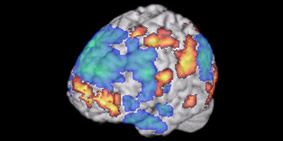Research

Our research encompasses four broad themes:
- Assessment and intervention in practice
- Neurocognitive processes in reading and dyslexia
- Comorbidity in learning disorders
- Biliteracy and bilingualism
Since the COVID-19 pandemic, much of our research and intervention work now incorporates an online platform, via remote teaching www.rillresearch.org and remote assessment www.eldel-mabel.net. We also provide professional development for practitioners working with these individuals.
Assessment and intervention in practice
Multilanguage Assessment Battery of Early Literacy (MABEL)
The MABEL battery was developed over three years (2008 – 2011) as part of a large scale, longitudinal, cross-linguistic study of early literacy development in English, French, Spanish, Czech and Slovak, within ELDEL (Enhancing Literacy Development in European Languages). The project was funded by Marie Curie Initial Training Network, Seventh Framework Programme (FP7/2007-2013) under Grant Agreement no. 215961. The main goal of the project was to elucidate the core cognitive, linguistic, and environmental predictors of children’s literacy development from kindergarten to the second grade. Five parallel studies were conducted, one in each country. Work on the MABEL project started in 2015 and became internationally disseminated in 2018. Currently, test materials are available in English, Spanish, Czech, Slovak and Welsh, with French materials forthcoming. In addition, Portuguese and Polish language versions of the battery are in development.
Contact: m.caravolas@bangor.ac.uk
Website: www.eldel-mabel.net
Remote Instruction of Literacy and Language (RILL)
The Remote Instruction of Literacy and Language (RILL) project is designed and run by researchers at the School of Psychology, and the Miles Dyslexia Centre at Bangor University. It comprises a short language and literacy programme for Key Stage 2 children and was launched in response to the COVID-19 pandemic and resulting national lockdown in April 2020. Our mission is to ensure that children can continue to receive the best possible literacy tuition during school closures, and to rapidly regain literacy skills once schools reopen.
Contact: manon.jones@bangor.ac.uk, c.downing@leedstrinity.ac.uk
Website: www.rillresearch.org
Neurocognitive processes in reading and dyslexia
Learning to read requires children to create arbitrary associations between visual symbols (letters) and their names and sounds. This ability is arguably the fundamental basis of reading ability, and, we argue, an inability to efficiency creates these connections is at the root of reading difficulties such as developmental dyslexia. In our work we use eye-tracking as well as other behavioural and neurocognitive measures such as event related potentials measurements, to examine how skilled and poorer readers acquire these visual-verbal connections, and the different statistical learning styles characteristics of these readers. We aim to show how skilled readers’ learning style allows them to rapidly and efficiently recognise visual-verbal associations, whereas poorer readers’ style incurs a lifelong deficit.
Contact: manon.jones@bangor.ac.uk
Comorbidity in learning disorders
We often find that people with dyslexia are more likely to have co-occurring, or comorbid, difficulties such as problems with attention, motor coordination, and numeric processing. Researchers affiliated with the centre investigate the nature of co-occurring literacy (e.g., dyslexia) and motor (e.g., developmental coordination disorder) disorders. A recent project established that children with either literacy or motor difficulties were five times more likely to have a co-occurring motor or literacy difficulty than children without any difficulties. This project also found that this higher risk of co-occurring difficulties is likely to stem from shared risk factors between literacy and motor disorders. In a follow-on project, the nature of co-occurring literacy, motor, and handwriting disorders is being investigated.
Contact: c.downing@leedstrinity.ac.uk, m.caravolas@bangor.ac.uk
Biliteracy and bilingualism
In most European languages, connecting letters to sounds is quite straightforward, since there is often a one-to-one correspondence. However, there are exceptions, and languages such as English and French in particular are more complex to read and spell: letters and letter clusters can have more than one pronunciation. In our labs, we examine how children learn to acquire two or more writing systems, or “orthographies”, and the impact that this has on their style of reading, and their reading outcomes. We use methods such as eyetracking and EEG as well as longitudinal designs, which follow children’s progress over several months or years.
Contact: manon.jones@bangor.ac.uk, m.caravolas@bangor.ac.uk